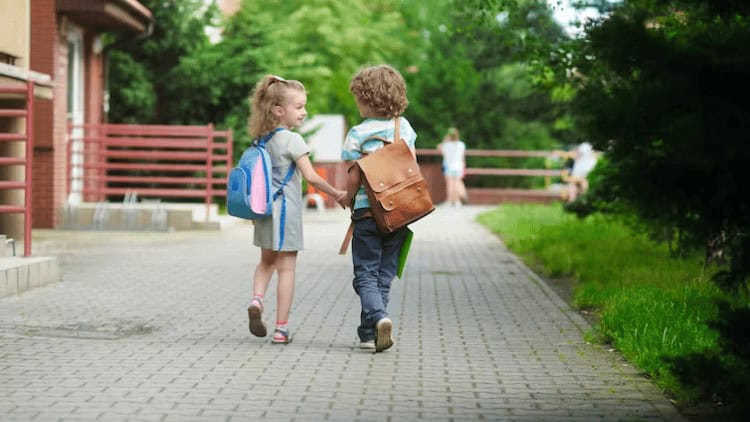Many refugee children are highly traumatised. Schools can offer a place of sanctuary and a welcoming culture.

Teachers in the United Kingdom are welcoming children seeking sanctuary into their classrooms. In 2022, 46,000 young people aged under 18 arrived in the UK from Ukraine. More than 5,000 asylum applications were made by unaccompanied children in 2022.
Studies have shown that teachers can feel ill-equipped or may not receive formal training to meet the needs of these new arrivals in their classrooms. In a range of research projects, my colleagues and I have explored teachers’ approaches to welcoming refugee children. We found that, by taking specific steps to create an inclusive school environment, schools and teachers can provide a place where a newly arrived child can feel safe and able to trust the adults in their community.
Creating sanctuary
We began by working in a primary school which had implemented the Schools of Sanctuary approach. This is a programme for schools created by the City of Sanctuary charity in the UK, which works to create communities that are welcoming to refugees and people seeking asylum.
A School of Sanctuary makes a commitment to learn about what it means to be seeking sanctuary—and to make this knowledge part of the curriculum, policies and practices of their school. A school hoping to become a School of Sanctuary needs to submit evidence of this commitment.
Consciously creating a welcoming environment when hosting refugees can lead to positive changes for the whole school. We found that the Schools of Sanctuary approach helped the primary school we worked with to examine the core principles they held as a school. The deputy headteacher said:
One of the things that’s really made a difference in achieving becoming an inclusive school and a School of Sanctuary is just being really clear in articulating our values. And the children, well they’re really proud of them, but it’s a new thing for them to think and talk about values and apply them to different situations.
One way teachers can create an inclusive space is to help the school community—including other teachers, pupils and parents—to understand that children seeking sanctuary have had many different and varied destinations on their journey to the classroom. Schools can help children explore the reasons why people are forced to migrate and to understand the different contexts they may have journeyed from.
The Boat, a story resource created at the University of Winchester, is one example. The book encourages children aged seven to 11 to engage with the concept of forced migration and to empathise with people seeking asylum—the last page is left blank, for children to continue the story themselves. Schools are also well placed to combat misinformation about refugees.
Fostering wellbeing
Research findings show that refugee children are at high risk of suffering mental-health issues—and also that social support, such as from school participation, can make a significant difference to their wellbeing. Making friends is a big part of this.
With colleagues, I took part in research which explored refugee education across Europe. In the Netherlands, a state-funded programme helps children connect with others by sharing their experiences. Buddy systems, where a child is paired up with a pupil at their new school, are also used.
Buddy systems are used too in the UK. The deputy headteacher of the primary school I worked with said:
New children are always paired up with somebody in a classroom and we try if possible if there’s another child who is from the same part of the world or speaks the same language, to be paired up so that they have that kind of comfort too.
Refugee children may be experiencing trauma—and teachers already facing a high workload and long hours may feel overwhelmed in supporting them. A useful resource is the Hub for Education for Refugees in Europe database. Tools like this, and proactive approaches to teacher education, would allow the workforce to feel more confident in supporting new arrivals.
This article is republished from The Conversation under a Creative Commons licence
Julie Wharton is a senior lecturer in the Institute of Education at the University of Winchester and programme leader for the National Award for Special Educational Needs Coordination. Her PhD was on 'Children seeking sanctuary and the welcoming teacher'.

